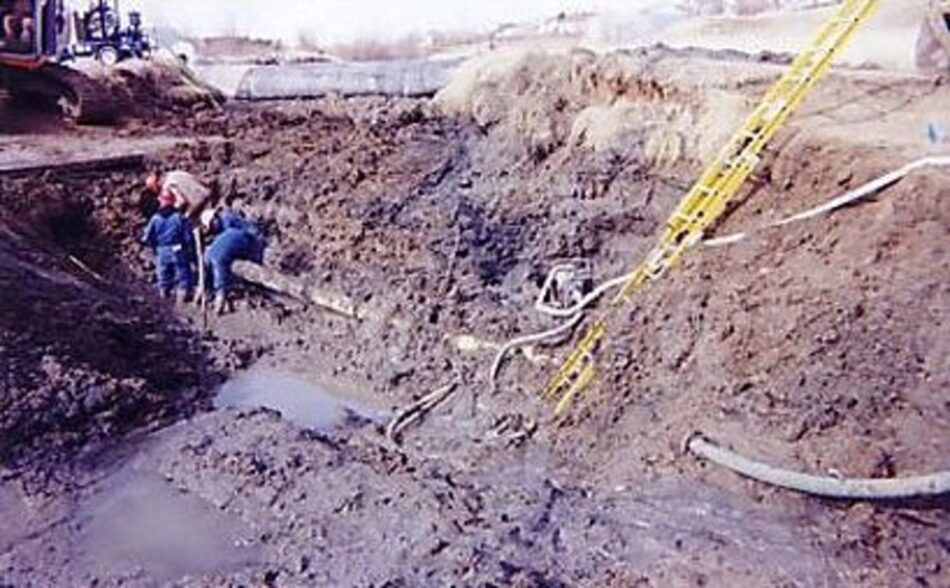
1.) Two 8ft tall by 50ft long AquaDams were used to de-water a stream for pipeline repair. You can see the AquaDam at the top of the picture. Men are working on the pipe after the soil has been excavated from around it.
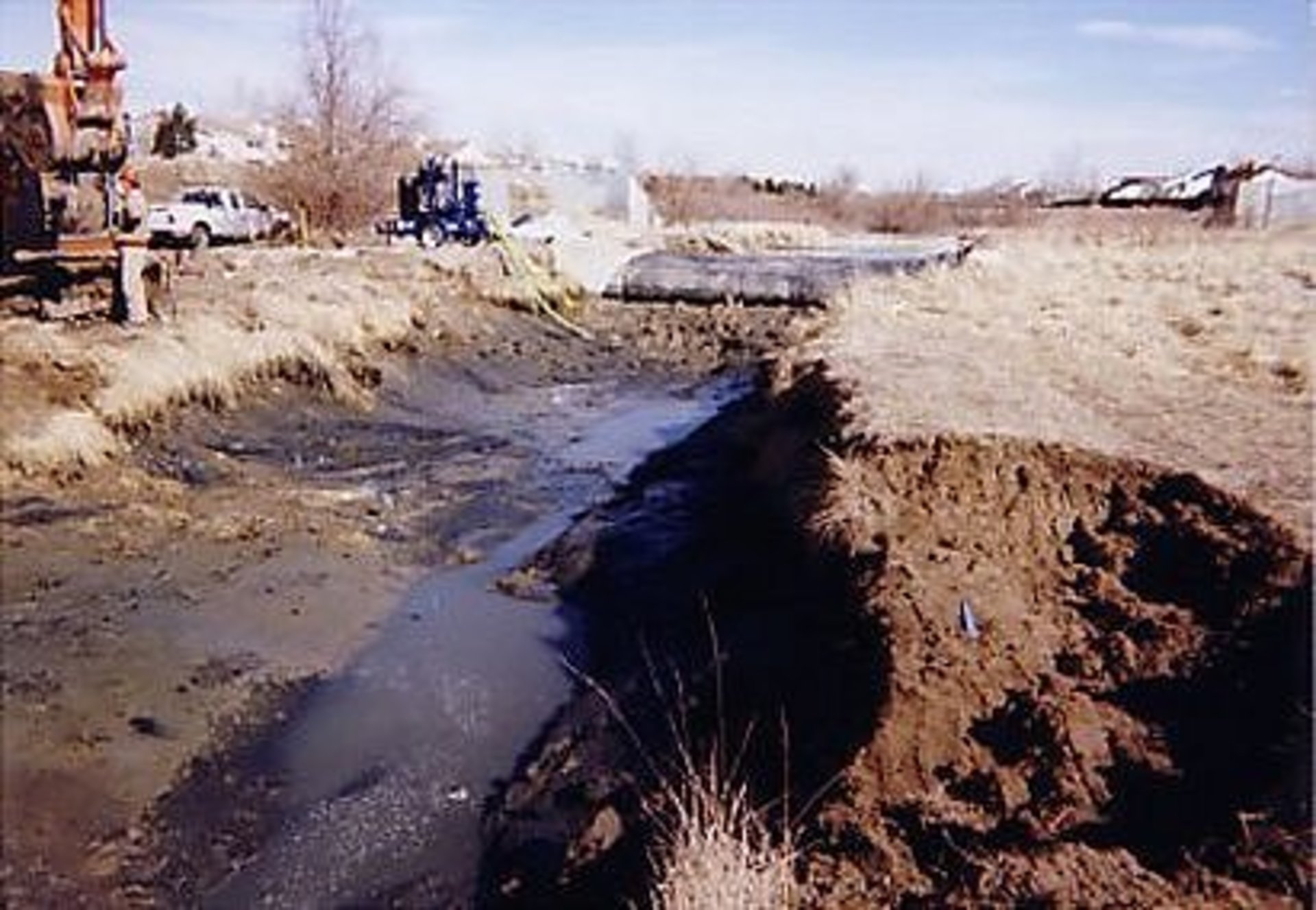
2.) This shows the work area between the two AquaDams. The AquaDams have been arranged in a staggered configuration. You can see the high-water mark on the wet soil. The water has been pumped off.
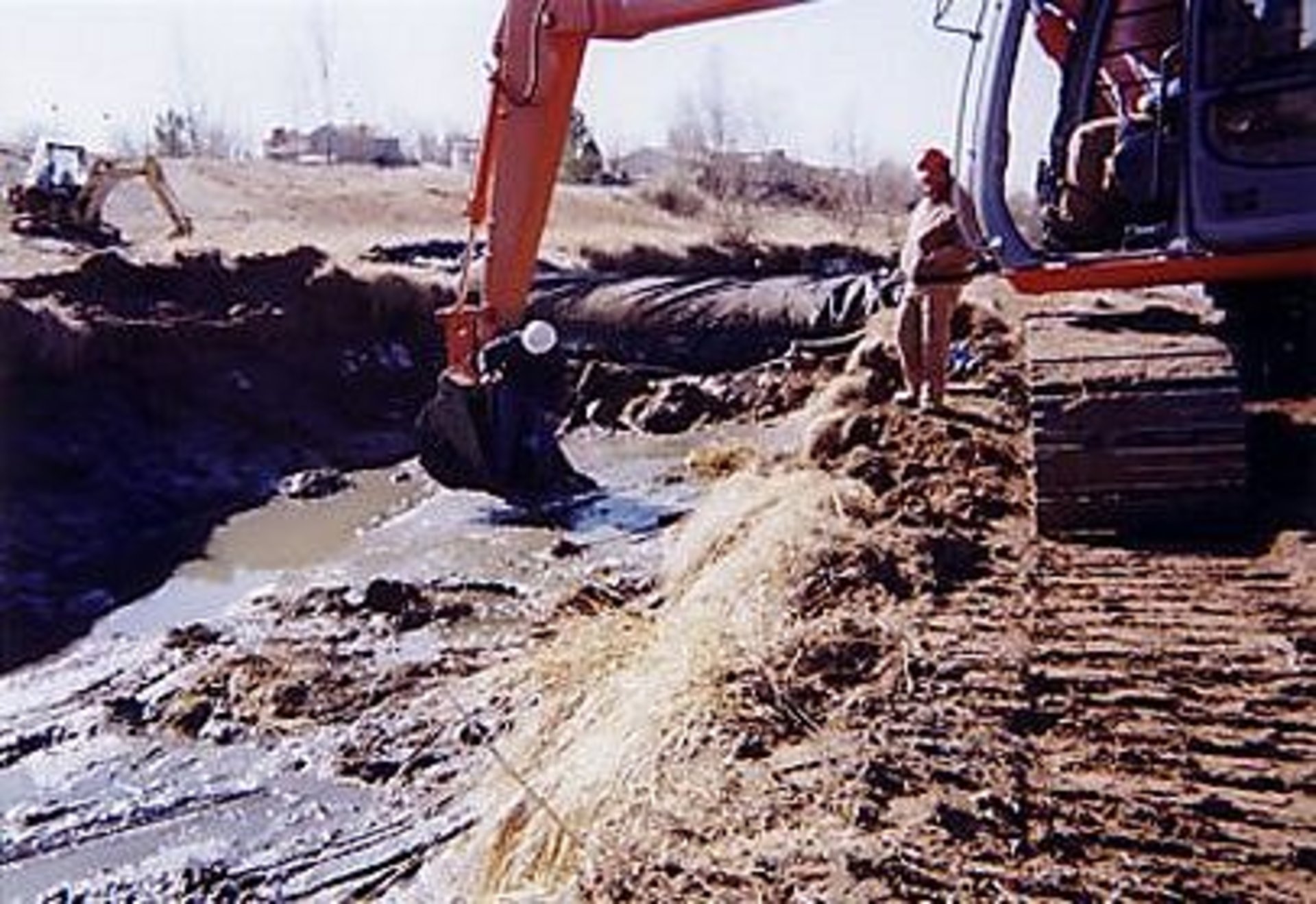
3.) A view from the opposite direction showing the downstream AquaDam. Excess mud from the excavation of the damaged pipe was placed alongside the AquaDam. This gave the AquaDam a tremendous amount of support, letting it control considerably deeper water than a freestanding AquaDam.
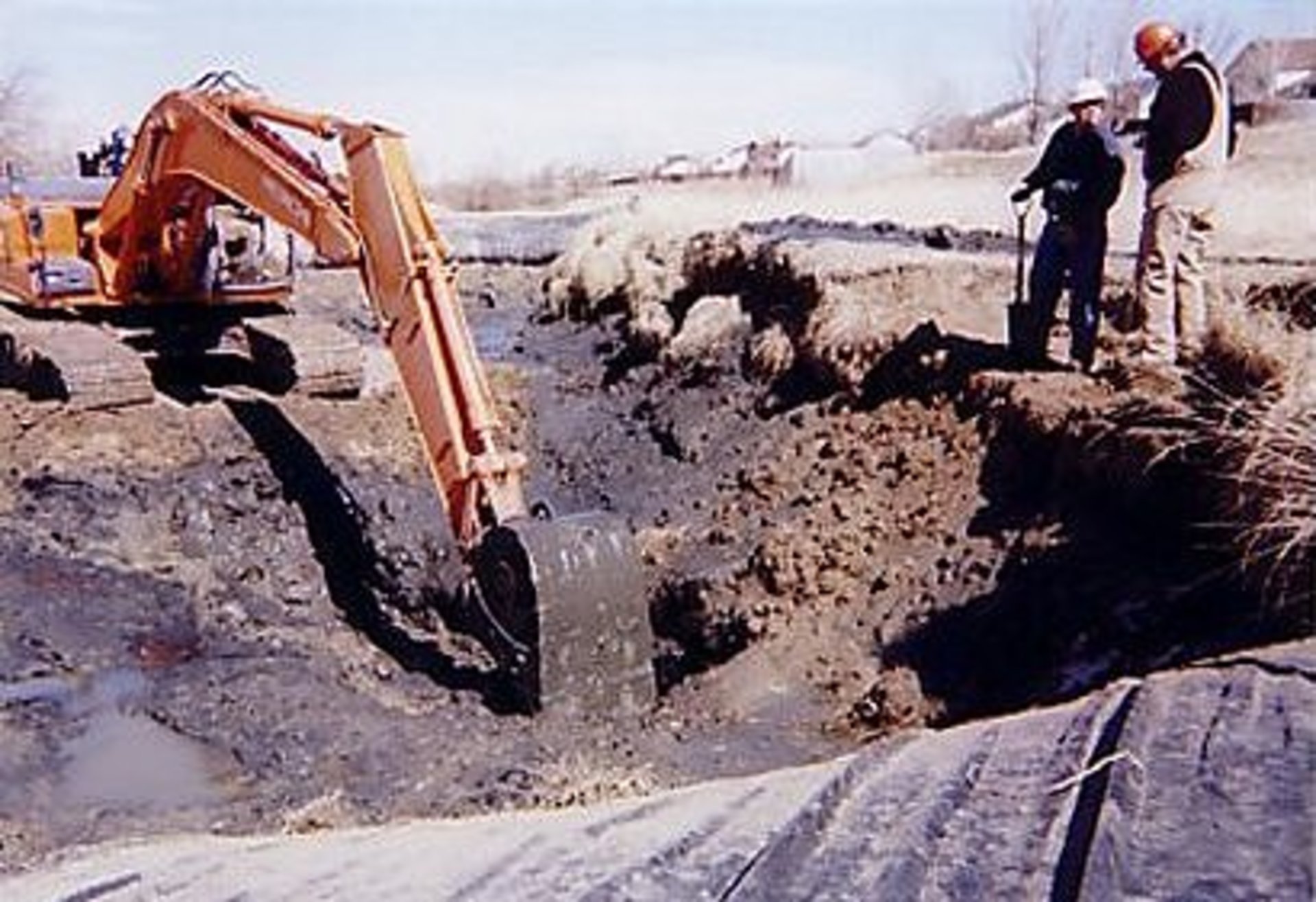
4.) The excavation continues. This picture is looking downstream from one AquaDam to the other.
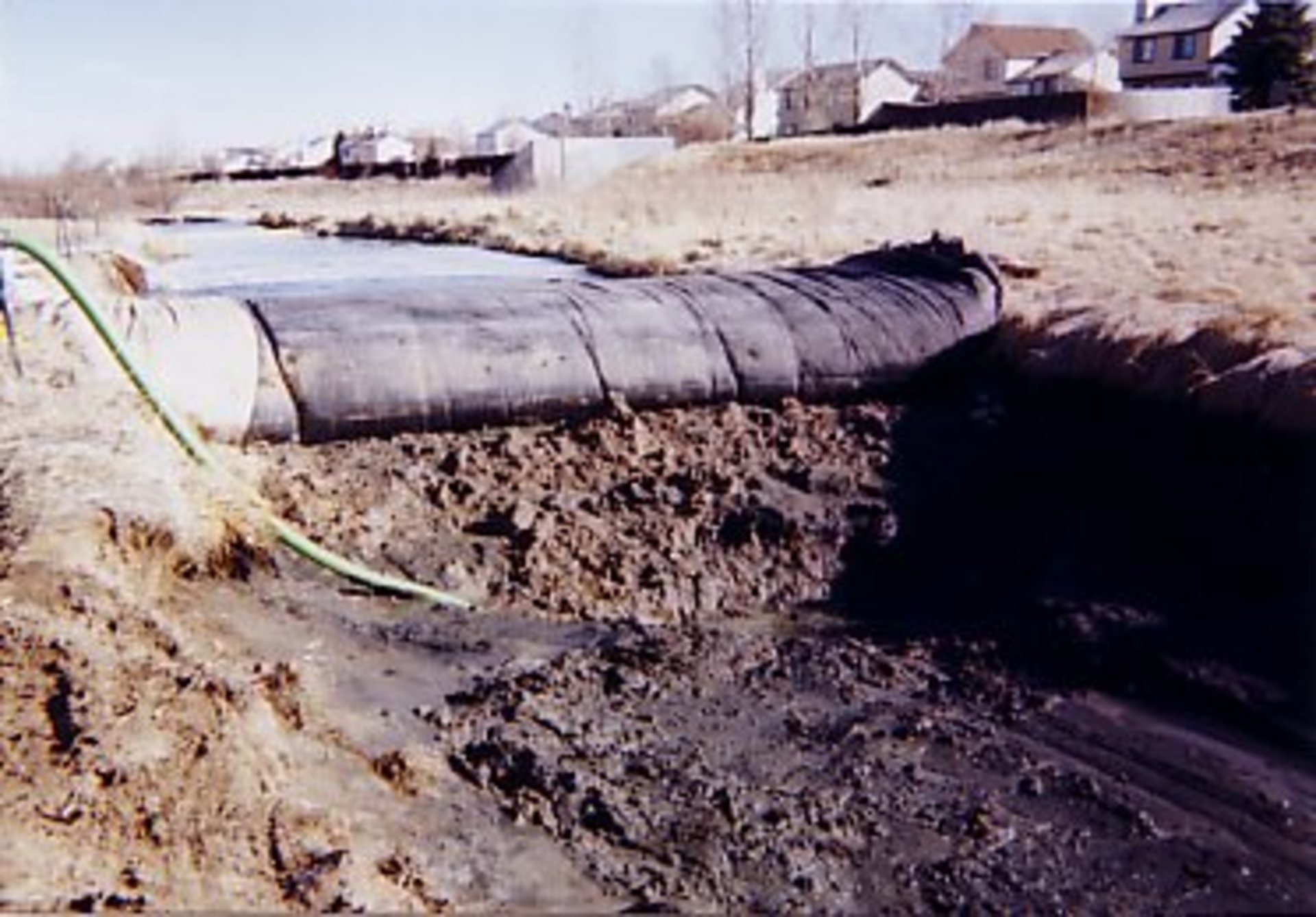
5.) A view of the upstream AquaDam. Notice the fill material placed in front, and the frozen water behind it.

6.) Each AquaDam took approximately one hour to install. Notice the multiple large pumps in the background. They pumped the water from upstream around the work area and back into the stream. Pumping power is very important on all jobs that involve working in the water.
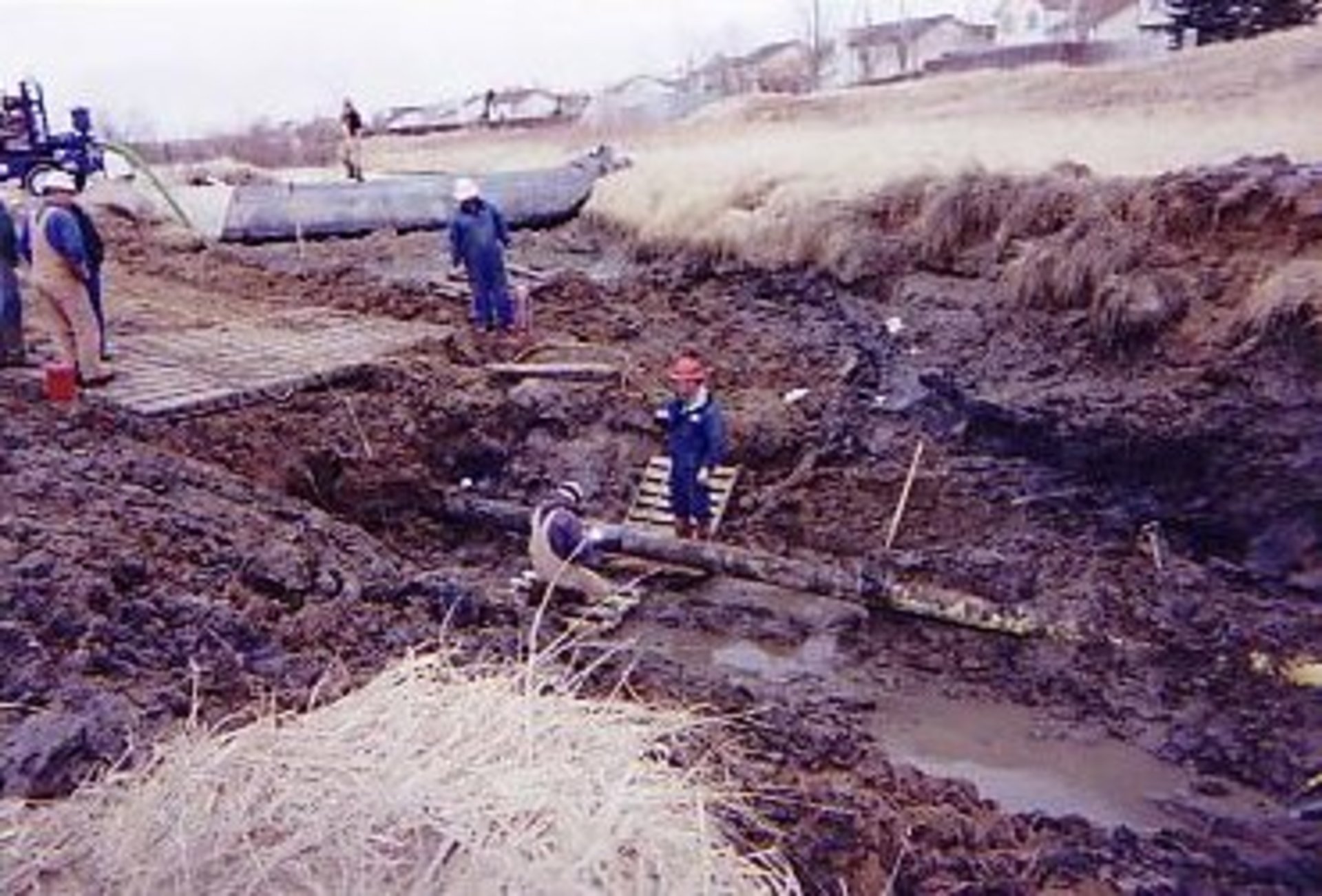
7.) After very carefully excavating the earth from around the pipe, the needed repairs took place. The pipe is 4ft-5ft below the stream bed.
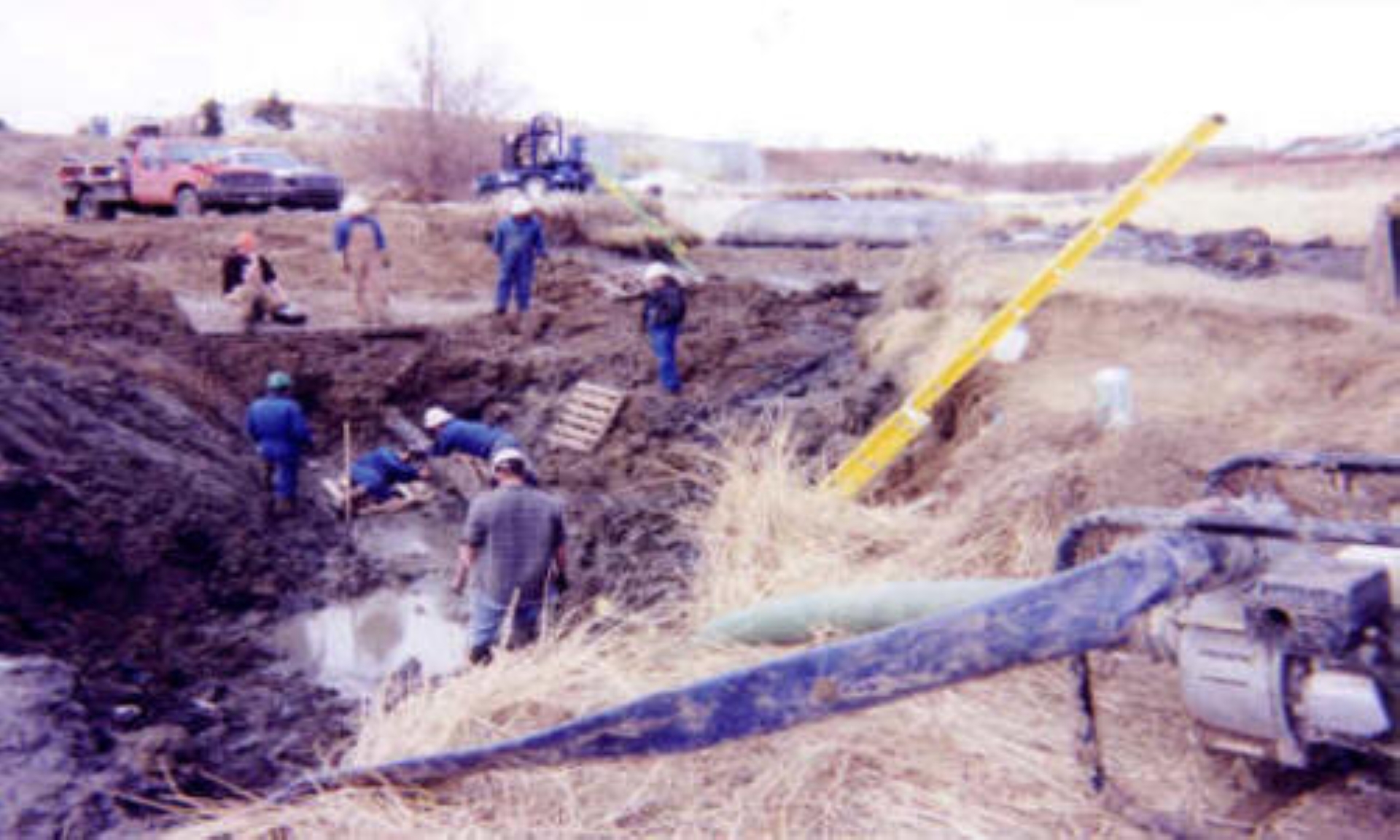
8.) Notice the AquaDam in the background and how dry the work area is. Small movable pumps were used to drain the last of the water from the work area. From the time of the first installation to the removal of the AquaDams, this entire project took only two days. The money saved by being three days ahead of the projected repair schedule meant big savings to the owners of the pipeline.


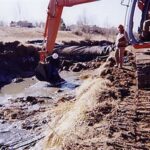
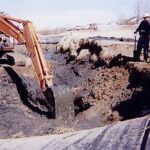
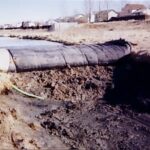


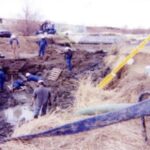
Two 8ft Tall 17ft Wide (full) 50ft Long AquaDams, Stream Diversion, Pump Around, Pipeline Repair, Staggered Configuration
